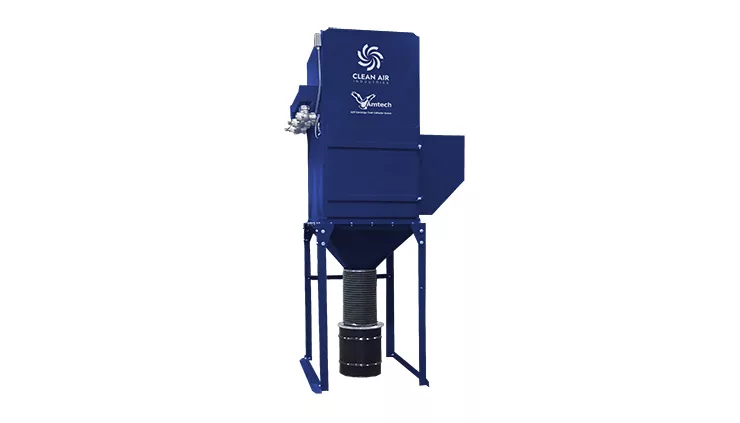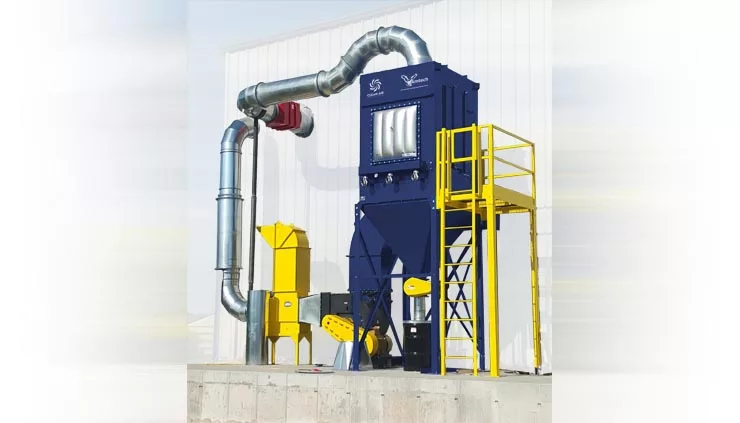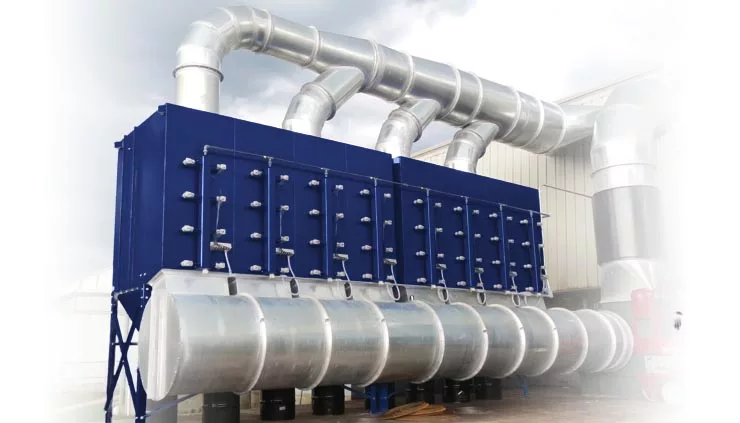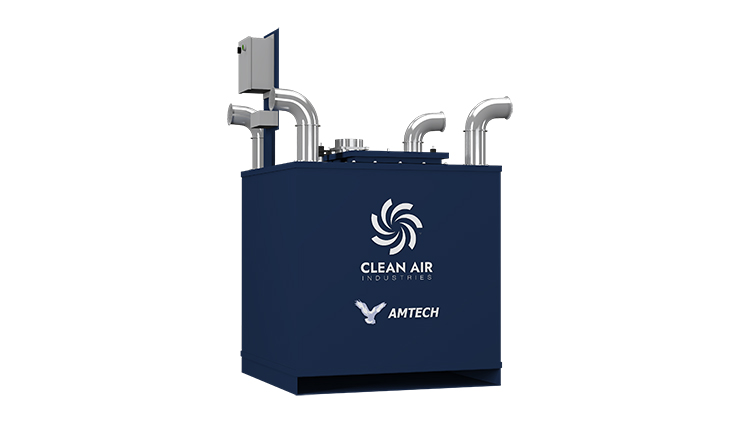Industrial Dust Collectors
Industrial dust collectors are advanced, large-scale filtration systems designed to efficiently capture and remove airborne dust and fumes in industrial environments. These dust collection systems are essential in maintaining air quality and safety in the manufacturing sector.
Optimized for high-performance air filtration, industrial dust collectors offer a comprehensive solution for manufacturers seeking to enhance workplace health and comply with environmental regulations. Dust collection systems come in both vertical and horizontal orientations, both with their own unique benefits.
At Clean Air Industries, we offer a wide range of innovative dust collection systems to effectively capture dust, fumes, and other airborne contaminates in your facility. Discover our solutions.
Dust Collection Systems for Industrial Manufacturing

Amtech ADT Dust Collectors
Up to 3,000 CFM Airflow
Efficient, compact design for continuous operation handles a wide range of dust applications from 1000 to 3000 CFM.

Amtech ATV Vertical Cartridge Dust Collectors
Up to 65,000 CFM Airflow
Featuring our patented downflow/vertical technology to minimize re-entrainment and extend filter life.
Learn More
Amtech ATH Horizontal Cartridge Dust Collectors
Up to 40,500 CFM Airflow
Featuring a downflow system with horizontally positioned filters and unit-mounted blowers design for heavy-duty use.
Learn More
Amtech PCF Pre-Coat Feeders
Maximize Cartridge Filter Longevity
Ideal for welding applications involving oil-coated metal, the Amtech Pre-Coat Feeder is designed to prevent premature filter clogging.
Learn MoreRequest A Quote
Please provide the information below, and one of our experts will be in touch very shortly to help with your needs.
Frequently Asked Questions About Industrial Dust Collection Systems
An industrial dust collector is a system designed to capture, convey, and collect airborne dust and particulates generated during industrial processes. It uses a fan to draw in contaminated air through filters that trap dust particles, then exhausts clean air back into the workspace or outside the facility.
Key components include:
• Inlet plenum
• Filter media (cartridge or bag)
• Pulse cleaning system
• Dust discharge or hopper
• Fan or blower
• Control panel and sensors
OSHA regulates workplace air quality, while NFPA provides standards for combustible dust safety. Some systems must also comply with EPA air emissions rules.
Filter life depends on application, dust type, and system use. Cartridge filters typically last anywhere between 4 – 12 months; bag filters may last longer.
Systems with pulse-cleaning can extend filter life.
We recommend quarterly inspections (every 3 months) to ensure filters are not clogged, which will greatly impact the performance of your dust collection system. In addition, dust bin emptying and pulse system checks are critical for reliable and consistent operation.
The type of filter media you choose affects how well dust is captured, how easily air flows through, and how the filter cleans itself. You can choose from materials like cellulose, polyester, PTFE, or nanofiber coatings—each designed to handle different kinds of dust.
Here is a comprehensive look at common filter media for industrial dust collection systems:
1. Cellulose (Paper)
• Material: Natural wood pulp fibers
• Filtration Efficiency: Low to moderate (~80–90% @ 1–5 microns)
• Best For: General-purpose dust collection involving dry, non-hazardous dust.
2. Flame-Retardant Media
• Material: Typically cellulose or polyester treated with fire-retardant chemicals
• Filtration Efficiency: Varies based on base material
• Best For:Environments with fire hazards or combustible dust
3. Spunbond Polyester
• Material: Synthetic thermoplastic fibers
• Filtration Efficiency: Moderate to high (up to 99%+ with surface loading)
• Best For: Moderate to heavy dust loads; washable and reusable in many cases
4. Nanofiber (on Cellulose or Synthetic Base)
• Material: Ultra-fine synthetic fibers applied as a thin top layer
• Filtration Efficiency: Very high (up to 99.99% @ 0.5 microns)
• Best For: Fine, dry particulate filtration and high-efficiency applications.
5. PTFE (Teflon®) Membrane Laminates
• Material: Expanded PTFE membrane bonded to a supporting layer
• Filtration Efficiency: Extremely high (HEPA-like performance)
• Best For: Critical filtration environments with near-zero emissions
Some models are designed for combustible dust and include explosion vents, isolation valves, and grounding systems. In some instances, a wet dust collector is required. Always verify compliance with NFPA 660 for combustible dusts.
